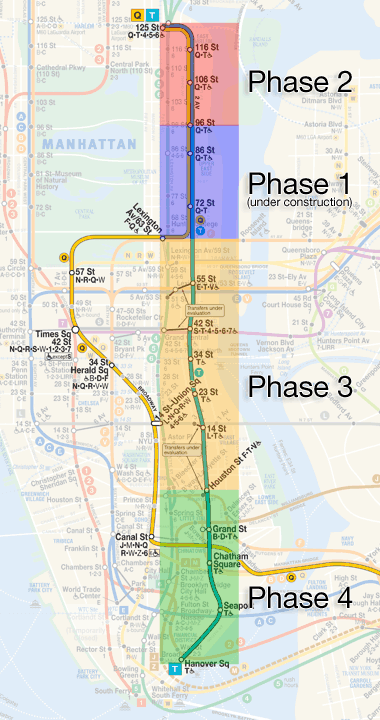QueensWay, or No Way?
/Many people in NYC (okay, just central Queens) are familiar with the long-abandoned Rockaway Beach Branch of the Long Island Rail Road (LIRR), an amazing stretch of track that runs all the way from Rego Park down to South Ozone Park. It has come into spotlight in recent years due to two competing visions: proposals for a greenway/linear park called the QueensWay-- inspired by the success of urban rail-to-trail projects such as the High Line-- and transit advocates who want some sort of rail rebuilt (varying from LIRR ‘reactivation’ to a massive project of subway conversion involving tunneling under Rego Park and connecting to the Queens Blvd subway line). In the meantime, it is (largely) a forest.
My fascination with it began growing up in South Ozone Park. As the Manhattan-bound A trains neared the Rockaway Blvd station, a large scrap-metal spider could be seen hanging on part of the abandoned line (it has since fallen, and decayed). An image of the spider in its heyday can be seen on an Angelfire site, where you can also scroll through to find images showing the line as it stood around a decade ago. Despite spending most of my life in Queens, I had never set foot on it, however. I since changed that, with several visits in the past few years.
This blog post will be a mix of sharing my own walks and images, along with some subsequent research I did to answer the questions that arose along the way.
First, let’s orient ourselves via map. The following shows you where the northern end broke off from the main LIRR line, shortly before the Forest Hills stop.
I entered the trail near there, right off of Fleet St, where it can be accessed inside a ball field, and I headed south. This end was the most overgrown, and was almost impossible to pass in some areas. Being in shape and limber is recommended (and absolutely not recommended in wet or humid weather conditions).
It wasn’t until I got past Metropolitan Avenue that I hit a big question mark… and a literal dead end.
It was then that I realized that this track was not as 'linear’ as it is often described.
The bridge where the line once crossed the (lower, and still semi-in-use) Lower Montauk LIRR line is completely gone… collapsed, or removed, I could not determine.
Let’s look at this point via (again) map.
I climbed down the hill onto and across the Montauk tracks where you see this:
More questions arose on the other side here, where there was no more track to follow. Beyond the above trestle, there was only a parking lot. Where’d the QueensWay go?
Just to the (west) side of this lot, however, I found another set of tracks, which curved west toward the Montauk tracks, but from there did head south. Was what we think of as one linear path actually TWO separate lines? Yes, and no.
Just ahead, where the tracks cross over Union Turnpike, it starts to get a little clearer. Here, I found two bridges, where the two lines began to come close (but not yet intersect).
The above image was taken from the bridge of the rail that came from the Montauk tracks looking east at the bridge of the rail that came south from Rego Park. (Make sense?)
Let’s get a overall picture of how this works, via satellite map.
Above, you can see where the “right of way” from the Rego Park line now is gone, and has been taken over by a parking lot, and where the stretch coming from the Montauk line runs adjacent to a small ball field. The two dark red/brown lines over Union Tpke represent the two bridges. Across the western one, the line peters out into a parking lot of an apartment complex.
The “?” I added in the previous satellite map grab shows where the two lines met, and where the rail line picks back up again, at the entrance to Forest Park.
Now let’s a break from my journey to fill in some of these blanks. After I returned home, I looked up the Wikipedia page for the Rockaway Beach Branch, and found my answers. The page notes: “Steam trains continued to serve Rockaway Park from Long Island City [the Montauk line] until June 16, 1910, when the electrified Glendale Cut-off opened, extending the line north from Glendale on the Montauk Division to White Pot Junction at Rego Park on the Main Line.”
So the two lines were together from the Rockaways north to Glendale, where they separated just south of Union Tpke. In short, a lot more complicated than either side discusses in their simplified history of the line.
Back to the journey!
The section of the park that runs through Forest Park is the smoothest, least forest-y (and most easily accessible) area, and is therefore the one I’d recommend for anyone who wanted to see this, but isn’t up to a deep forest hike.
At the end of Forest Park, over Park Lane South, fencing was put up to block the overpass bridge, but large holes have been cut through by others to make passage easy. Past there is where it starts to get wild again, and where you start to notice, as the Wiki page notes, “A number of properties adjacent to the right-of-way have expanded their property fences over sections of the former right-of-way, without acquiring the rights to the land”. Oop. Close to Atlantic Avenue is where I headed out, as a look further south seemed to indicate further passage would be quite difficult.
Map-wise, here’s where it runs south of the park.
And with satellite image mode:
(That tree line provides a helpful illustration, no?)
After bailing from the trail, I continued on foot on street level alongside the railway to continue my journey.
(See? Impassable. I’d never to get touch those spider remains.)
Right over here, at Atlantic Avenue, the entrance to the former Atlantic Ave station is fenced off.
Right south of Atlantic, I noticed something curious up there… school buses?
How’d they get there? And how do they get down every day? Once again, the Wiki entry provided my answers: “The line’s connection with the Atlantic Branch at Woodhaven Junction, consisting of an interlocking, tunnel portal and incline that rose to meet the elevated Rockaway Branch, was closed and removed in October 1955. This connection had primarily been used to allow trains from Brooklyn to reach Aqueduct Racetrack. The remains of the interlocking can still be seen in the Atlantic Avenue tunnel, while the incline is now used by Logan School Bus Company, who parks their bus fleet along the incline.”
Here is a link to what remains of that incline.
And here’s what that bus lot looks like via satellite.
Soon after this point, my journey came to an end on Liberty Avenue, where the Rockaway Beach Branch meets up with the Rockaway-bound A line heading south. From Liberty, I was able to capture an image of the spider’s carcass. RIP, little guy.
I hope that this post was able to help shed some light on the Rockaway Beach Branch/QueensWay/etc, which it turns out most people don’t know that much about, myself included prior to these explorations.
Regarding the debate between park versus rail, a few of my personal opinions: I (mostly) side with the park crowd, as I feel that re-drawing Woodhaven Blvd with dedicated bus lanes and adding Select Bus Service could alleviate a lot of transit issues… and could be done in the very near future at (relatively) low cost. With the Second Avenue subway (now in its 9th? decade of planning), East Side Access for LIRR, Fulton Center, etc, the MTA has proved it is no longer capable of doing big ideas remotely on time or in budget. Queens residents can’t pin their transit hopes on a fantasy that this is not the case. Yes, this area could benefit from more rail. But look a subway map of Queens. Most of it is a subway dead zone. This area is less-so than most, actually. And finally, let’s be real… as the Wiki entry notes, most residents don’t want rail in their 'backyards’. Or a park. They want the status quo. NIMBY, literally.
Until you can fight that, the forest remains.



























